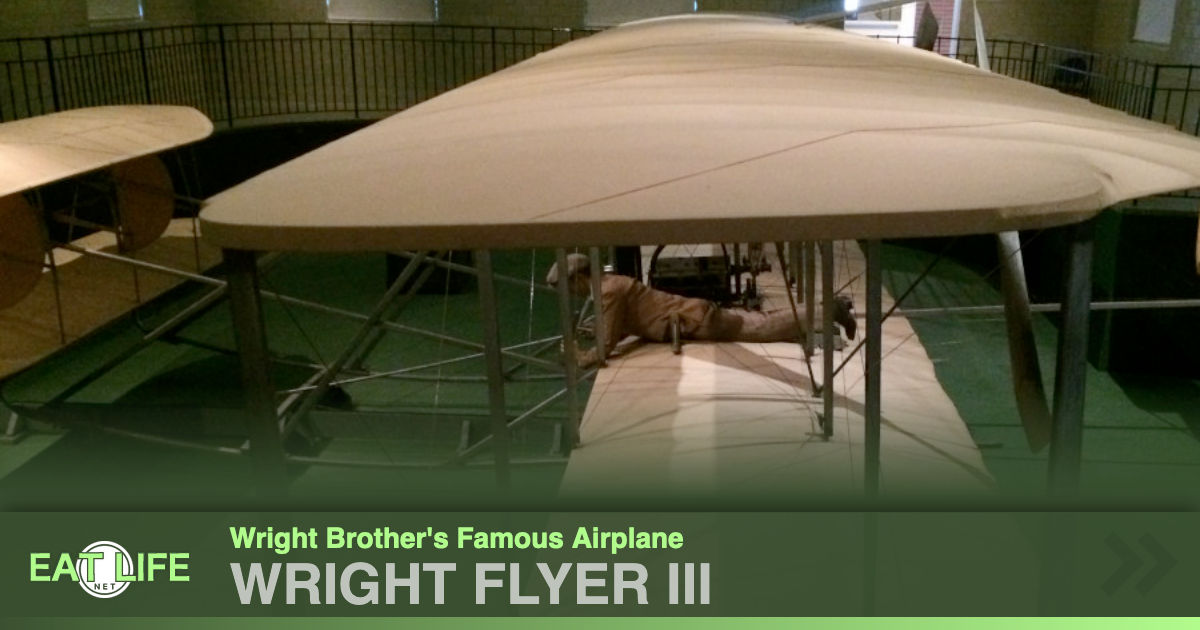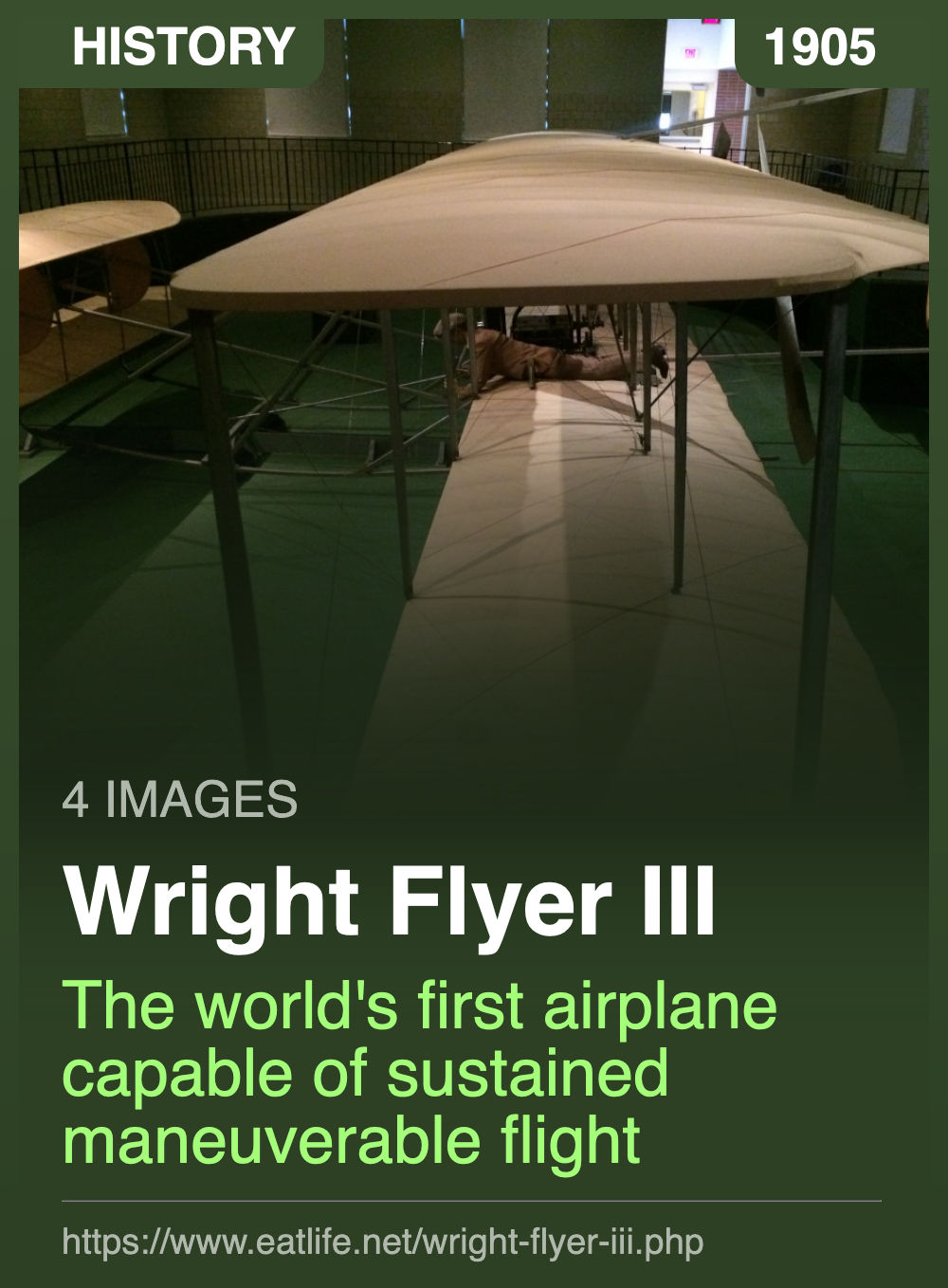T
he first powered flight by Orville Wright on December 17, 1903, lasted 12-seconds and covered 120 feet, marking the first time a human had successfully piloted a self-propelled machine that rose into the air on its own power and landed on ground as high as that from which it had taken off. The Wright Flyer had indeed flown, but basically in a straight line and only a few feet above the ground. To be truly practical, an airplane would have to be able to climb to an altitude that would clear trees and buildings, and it would need to be fully maneuverable. In addition, a practical airplane would have to be reasonably safe and easy to control.The Wrights began work on Wright Flyer III on May 23, 1905. Like their two previous airplanes, Wright Flyer III was a biplane with a dual canard elevator, dual pusher propellers, and a dual vertical tail. The tail was taller, and the entire craft sat slightly higher off the ground, but it was much like Wright Flyer II, which was flown during 1904 and early 1905. In fact, the engine and almost all of the metal hardware from Wright Flyer II was reused in the all-new airframe. In the new plane, the brothers returned to their 1903 wing camber of 1/20 of the wing chord. As with the 1903 engine, the 1904-05 engine was designed by the Wrights and built by Charlie Taylor.
The first practical airplane:
The 1905 Wright Flyer III, built by Wilbur (1867-1912) and Orville (1871-1948) Wright, was the world's first airplane capable of sustained, maneuverable flight.
Similar in design to their celebrated first airplane, this machine featured a stronger structure, a larger engine turning new "bent-end" propellers, and greater control-surface area for improved safety and maneuverability.
The Wrights made several modifications to this flyer and learned how to perform aerial maneuvers safely during a series of flights at Huffman Prairie during 1905. The plane was dismantled after these flights, but rebuilt and flown in 1908 at Kitty Hawk, and ultimately restored for display in 1950 for Carillon Historical Park.
https://www.asme.org/about-asme/engineering-history/landmarks/224-wright-flyer-iii
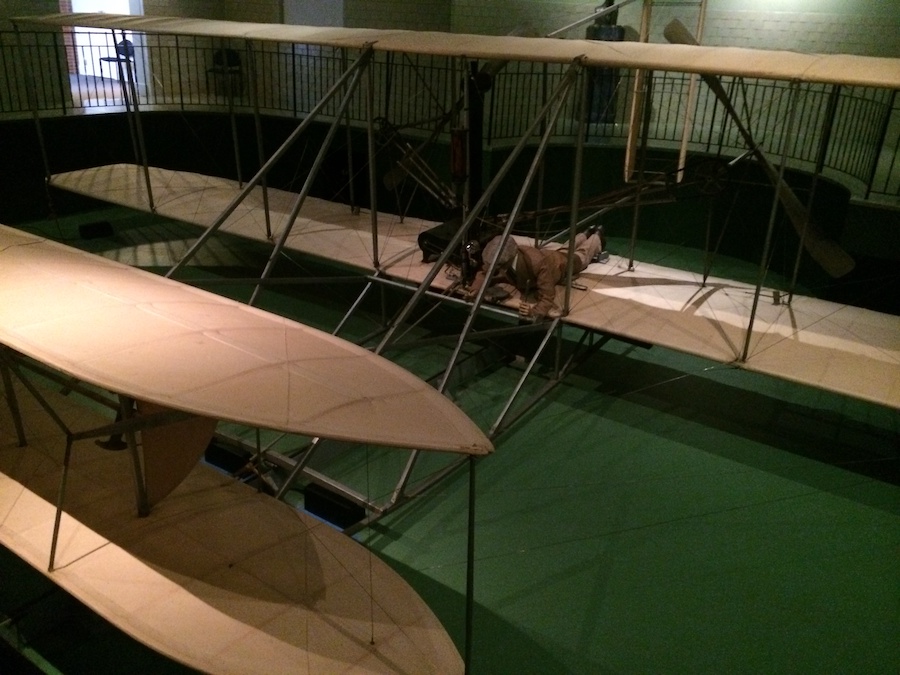
Over the winter of 1904-1905, the Wright brothers built a new aircraft, the Wright Flyer III. Orville first flew this airplane on 23 Jun 1905. Flyer III had a new airframe and an upgraded engine with slightly larger cylinders, but it was essentially the same design and had the same marginal performance and instability as Flyers I and II. These shortcomings caused a major crash on 14 July 1905 that all but wrecked the airplane, but from which Orville emerged unscathed.
- The crash convinced the Wrights to make radical changes to the aircraft design"
- They almost doubled the size of elevator (in front) and rudder (in back) and moved them about twice the distance from the wings.
- They added two fixed vertical vanes (called "blinkers") between the elevators to serve as stabilizers and help prevent the Flyer's tendency to slip or slide sideways in a turn.
- They adjusted the rigging to give the wings a very slight dihedral and counter the airplane's tendency to roll.
- They disconnected the rudder control of the rebuilt Flyer III from the wing warp control - as they would in all future aircraft - placing it on a separate control handle.
The wing warp - roll - and rudder - yaw - controls had been interconnected in the 1902 Glider, 1903 Flyer I, and 1904 Flyer II.
On 5 Oct 1905, Wilbur flew 24 miles in 39.5 minutes, longer than the total duration of all the flights of 1903 and 1904. Four days later, they wrote to the Secretary of War, offering to sell the world's first practical airplane.
Salvaged and Restored:
The Wrights disassembled the Flyer III on 7 Nov 1905 and stored it until the spring of 1908 when they adapted it to carry two people, a pilot and a passenger.
They also added a lighter, more powerful motor and a new control system.
They shipped it to Kitty Hawk and on 14 May 1908 made the first passenger flight, taking their mechanic Charlie Furnas aloft for several rides.
Wilbur crashed the airplane that same day and they abandoned it at Kitty Hawk, shipping only the engine back to Dayton.
The aircraft was salvaged in 1914, then restored over several years between 1947 and 1950.
Today, the restored Flyer III is on display at the Wright Brothers National Museum in Carillon Park, Dayton, OH.
https://www.wright-brothers.org/Information_Desk/Just_the_Facts/Airplanes/Flyer_III.htm
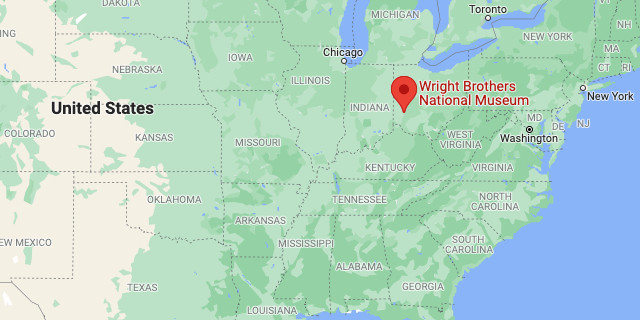
Wright Brothers National Museum
https://www.google.com/maps/place/Wright+Brothers+National+Museum
Between the 1904 and 1905 aircraft, you will notice that the radiator and fuel tank were moved back to the front strut, as on the 1903 aircraft, and the size of the fuel tank was increased. The weight was also reduced by eliminating the 70 pounds of ballast. The 1905 aircraft weighed about 860 pounds with the pilot. The brothers added small semi-circular surfaces called "blinkers" between the elevators to improve the aircraft's lateral stability. The brothers retained the catapult launching system first used in 1904.
The 1905 aircraft could be flown until the fuel tank was empty; staying in the air for more than a half hour, flying nearly 25 miles around Huffman's farm, executing turns and figure 8's, and flying more than 50 feet off the ground.
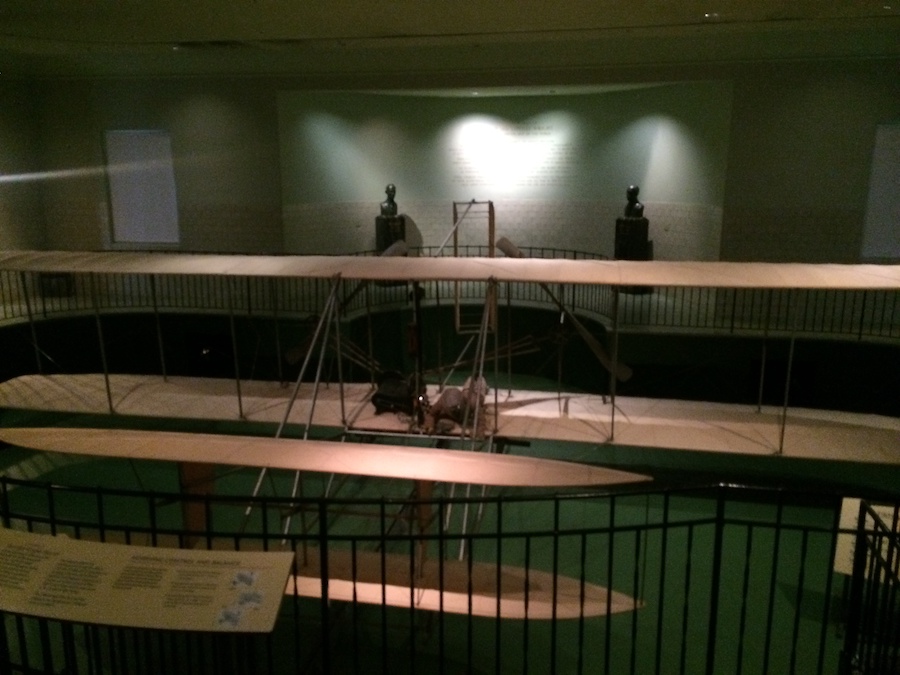
On October 5, 1905, Wilbur Wright piloted the Wright Flyer III in a flight that stood as a world record until 1908. The achievement proved the Wright Brothers' Flyer was practical for fixed-wing aircrafts and would not have been possible had a severe crash not occurred months before, encouraging the Wright brothers to change the plane's design. The circling flight of 24 miles in 39 minutes and 23 seconds was made over Huffman Prairie in Ohio and was longer than the total duration of all the team's flights of 1903 and 1904.
The flight was depicted on Ohio's commemorative state quarterThe plane became practical and dependable, flying reliably for significant durations and bringing its pilot back to the starting point safely and landing without damage.
https://www.edn.com/wright-flyer-iii-becomes-1st-practical-aircraft-october-5-1905

Wright Flyer III depicted on Ohio's 2002 Quarter

Orville Wright was a lifelong tinkerer, and his last undertaking was a grand one. In 1946, his friend Edward Deeds, a Dayton industrialist who worked with Charles Kettering to invent the automobile self-starter, announced plans for Carillon Historical Park, a new museum celebrating the region's revolutionary role in transportation history.The Wright brothers would be highlighted at the new Dayton attraction, and Deeds proposed building a replica of their 1903 Wright Flyer for display. Orville had a different idea: The 1905 Wright Flyer III was in storage, although it needed some restoration. Deeds jumped at the thought. Not only did the plane fly in Dayton (taking off and landing from a small cow pasture known as Huffman Prairie), Orville considered it the most important aircraft he and his brother had ever built.
The 1905 Wright Flyer III is considered the world's first practical airplane. The Wright brothers' 1903 design that flew at Kitty Hawk, North Carolina, was airborne for less than a minute during each of its four B-line flights (Orville was the pilot during the first one), and a reimagined 1904 version failed to fix significant control issues. But the brothers' 1905 craft could turn figure eights, land and take off again. On Oct. 5, 1905, Wilbur flew the plane for nearly 40 minutes - so long he ran out of gas.Orville oversaw the restoration of his Wright Flyer III and helped design Wright Hall, the building that houses the plane at Carillon Historical Park. Visitors encounter the legendary machine displayed in an open pit, offering an impressive view of the plane's more than 40-foot wingspan. This was Orville's idea. His wish was that visitors look down on the plane to understand how the controls really work. Today, a figure of Wilbur lies flat on his stomach across the middle of the machine. There was no seat. Instead, the pilot was nestled in a hip cradle, with a joystick-like mechanism in his left hand and a paddle-like mechanism in his right. Together, they controlled the plane's three primary axes: roll, pitch and yaw.
https://www.ohiomagazine.com/ohio-life/article/see-the-wright-flyer-iii-at-carillon-historical-park
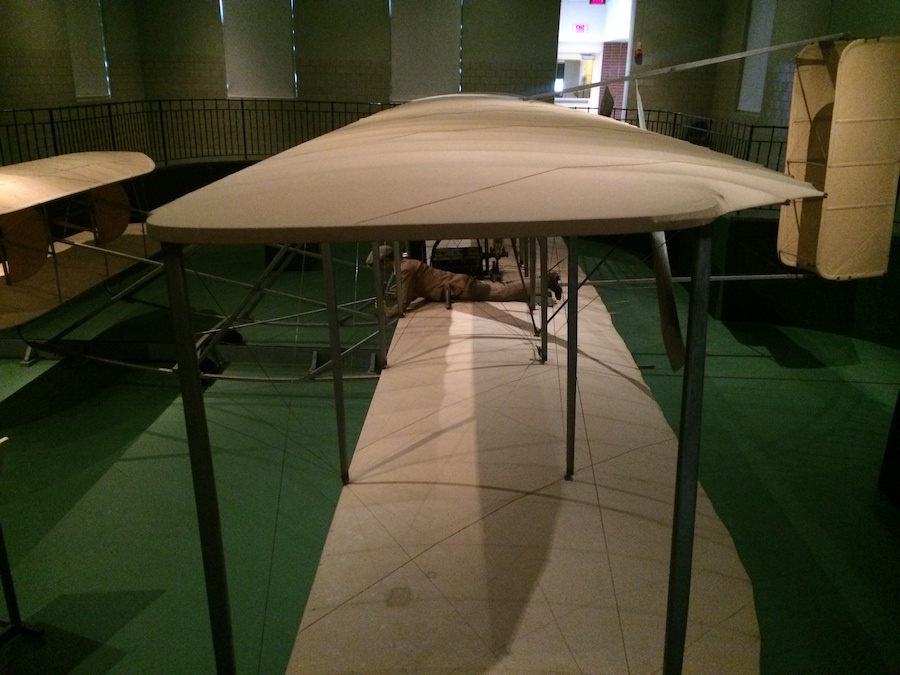
| Specifications: | |
|---|---|
| britannica.com/topic/Wright-flyer-of-1905 | |
| Wingspan | 40' 6" |
| Wing Area | 503 sq ft |
| Length | 28 ft |
| Weight (empty) | 710 lbs |
Wright Flyer III:
- The third powered aircraft by the Wright Brothers
- Built during the winter of 1904-05
- Orville Wright made the first flight with it on June 23, 1905
- The airframe was of spruce construction
- It had a wing camber of 1-in-20 as used in 1903, rather than the less effective 1-in-25 used in 1904
- The new machine was equipped with the engine and other hardware from the scrapped Flyer II and, after major modifications, achieved much greater performance than Flyers I and II.
Flying at Kill Devil Hills:
- To keep their knowledge from falling into competitors' hands, the Wrights stopped flying, and disassembled the airplane on November 7, 1905
- They returned to Kitty Hawk in May of 1908 to flight test their modified 1905 flyer, which they equipped with upright hand controls and seats for the pilot and passenger
They were required by the Signal Corps to produce an airplane "capable of carrying two men and sufficient fuel supplies for a flight of 125 miles, with a speed of at least 40 miles an hour."
- They started flying on May 6, were first witnessed flying by correspondents on May 11, and flew their first passenger on May 14, 1908
On May 14, 1908, Wilbur flew mechanic Charles Furnas (1880–1941) 1,968 feet in 29 seconds, making him the first airplane passenger
- The same day, Orville also flew with Furnas, this time 2,125 feet in 4 minutes 2 seconds.
Orville's flight with Furnas was seen by newspaper reporters hiding among the sand dunes; they mistakenly thought Wilbur and Orville were flying together. He is one of the few people to fly with both Wright brothers (their sister Katharine being another).Later that day May 14, 1908, Wilbur was flying solo when he moved one of the new control levers the wrong way and crashed into the sand, suffering bruises. The Flyer's front elevator was wrecked, and the practice flights ended. Due to deadlines for their upcoming public demonstration flights in France and Virginia, the Wrights did not repair the airplane, and it never flew again.
https://www.daytonhistory.org
1000 Carillon Blvd
Dayton, Ohio 45409






